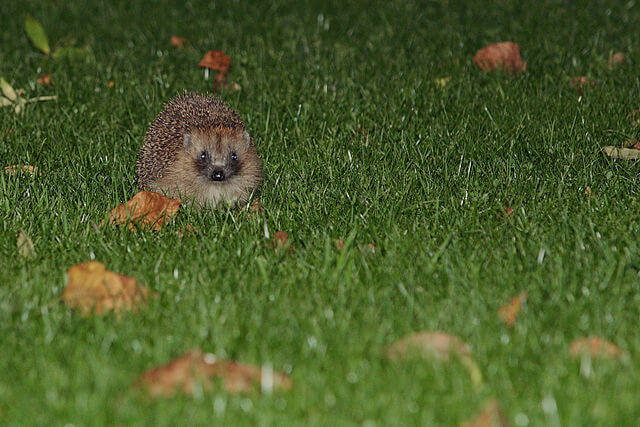
Researchers have unveiled a cutting-edge solution to address Britain’s escalating biodiversity crisis by harnessing the power of artificial intelligence (AI).
They’ve introduced a network of AI-controlled cameras and microphones strategically positioned in the wild to track and identify animals and birds, a technological marvel set to revolutionise conservation efforts.
Field trials conducted at three locations – Barnes, Twickenham, and Lewisham in London, all owned by Network Rail, a project collaborator – showcased the remarkable capabilities of these robotic monitors. These advanced systems have autonomously collected audio and visual data, which, when processed by computer algorithms, could accurately recognise distinct species and plot their whereabouts.
Numerous avian species were identified by their unique calls, while AI successfully pinpointed foxes, deer, hedgehogs, and bats. Astonishingly, no human observers were required for these identifications.
“The crucial point is the scale of the operation,” said Anthony Dancer, a conservation specialist at the Zoological Society of London (ZSL). “We have captured tens of thousands of data files and thousands of hours of audio from these test sites and identified all sorts of animals from them. We couldn’t have done it at that scale using human observers. Only AI made it possible.”
The chosen test sites, situated alongside rail lines, were ideal for the initial phase of the project.
“Access to relatively wild land was therefore easy – an important factor for starting our project,” said Dancer.
“And now that we have demonstrated the technology’s promise, we can expand to other areas.”
These areas, shielded from unauthorised access and infrequently visited by maintenance personnel, presented an opportunity to document the wildlife inhabiting Network Rail’s extensive 52,000-hectare landholdings, which play a pivotal role in safeguarding the nation’s biodiversity.
“Take birds like the Eurasian blackcap, blackbird and great tit,” said Neil Strong, biodiversity strategy manager for Network Rail. “All three species require healthy environments – including good supplies of berries and nuts – and all three were detected by AI from the acoustic signals collected by our sensors at our three test sites. That is encouraging and provides important benchmarks for measuring biodiversity in future.”
The AI-driven monitors have also revealed the presence of six bat species, including the common pipistrelle. O
“Bats almost certainly use railway bridges for roosting,” Dancer told the Observer. “So if we can get more detailed information about the exact locations of their roosts using AI monitors, we can help protect them.”
ther surprising discoveries, such as hedgehogs that regularly commute along the UK’s rail lines.
This point was underlined by Strong. “In the past, we have had to estimate local wildlife populations from the dead animals – such as badgers – that have been left by the track or the roadside. This way we get a much better idea of population sizes.”
“Hedgehogs are really constrained to certain locations because they get fenced in,” said Strong. “But there are ways round that problem. In Scotland they are creating hedgehog highways on rail lines, which involves cutting small holes into the bases of all new fencing that is put up so hedgehogs can pass through but nothing larger can get in.”
Zoological Society of London (ZSL) and Network Rail plan to expand the implementation of AI monitoring systems to additional regions, including Chobham in Surrey and the New Forest.
“On the sites that we have already tested, we found signs of more than 30 species of bird and six species of bat, as well as foxes and hedgehogs, so we were pleasantly surprised with the relatively healthy levels of wildlife we found in London,” said Dancer. “However, that was not really the main purpose of our project.
“The aim was to show that AI-led technology – linked with acoustic and camera traps – could be used effectively to survey wildlife on Network Rail land but also in other areas in the UK. It will tell us how species are moving in response to climate change and how we should be managing vegetation, not just beside rail lines but on road verges and other places.”
It is increasingly evident that machine learning, embodied in AI, will be an indispensable tool in the ongoing mission to preserve biodiversity, especially as climate change continues to alter the British landscape.
“This technology will require the analysing of tens of thousands of hours of recordings and hundred of thousands of images,” said Strong. “Realistically, only computers can do that for us.”
——————————————————————————
At Natural World Fund, we are passionate about stopping the decline in our wildlife.
The decline in our wildlife is shocking and frightening. Without much more support, many of the animals we know and love will continue in their decline towards extinction.
When you help to restore a patch of degraded land through rewilding to forests, meadows, or wetlands, you have a massive impact on the biodiversity at a local level. You give animals a home and food that they otherwise would not have had, and it has a positive snowball effect on the food chain.
We are convinced that this is much better for the UK than growing lots of fast-growing coniferous trees, solely to remove carbon, that don’t actually help our animals to thrive.
This is why we stand for restoring nature in the UK through responsible rewilding. For us, it is the right thing to do. Let’s do what’s right for nature!
Donate today at https://naturalworldfund.com/ and join in the solution!

